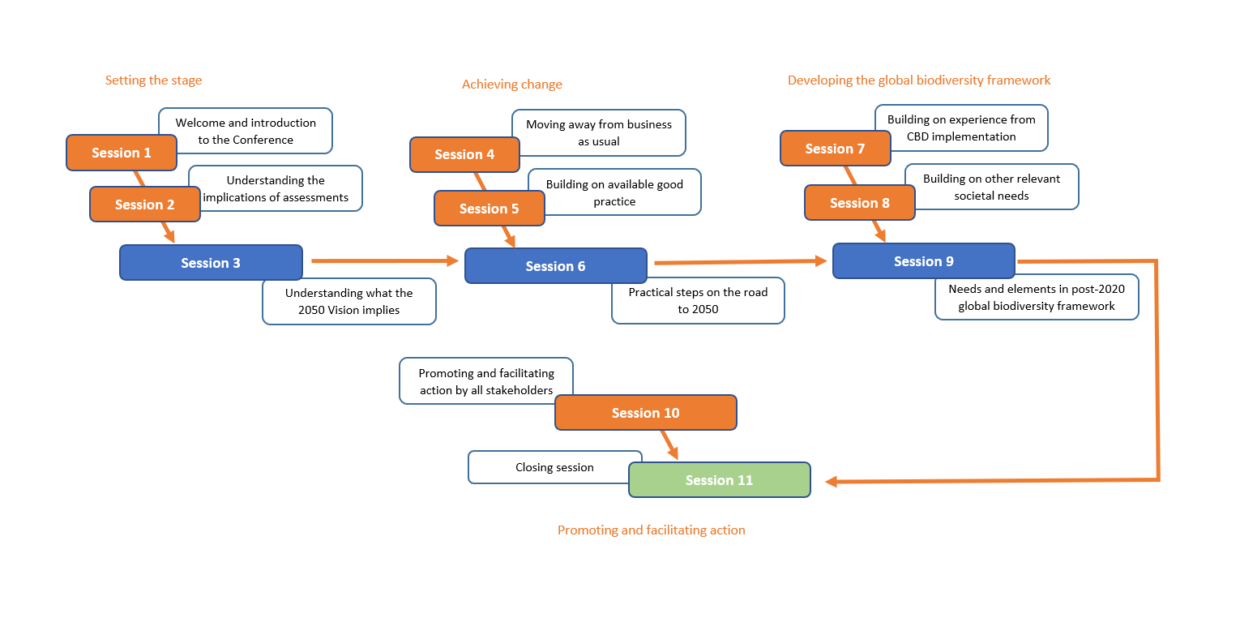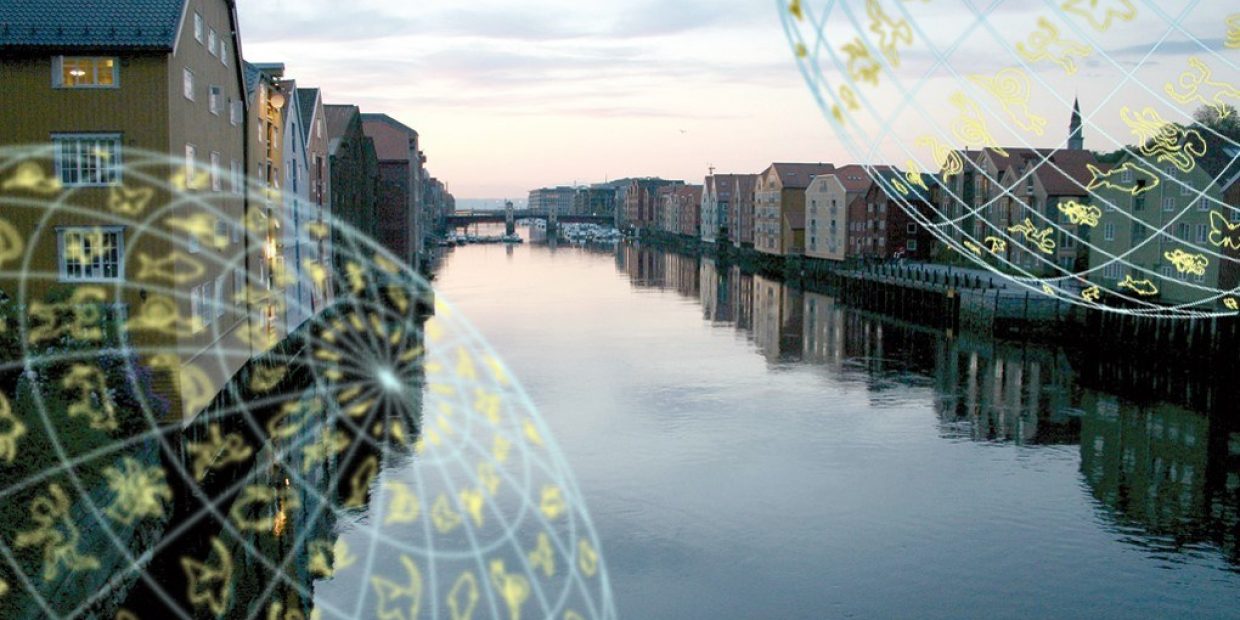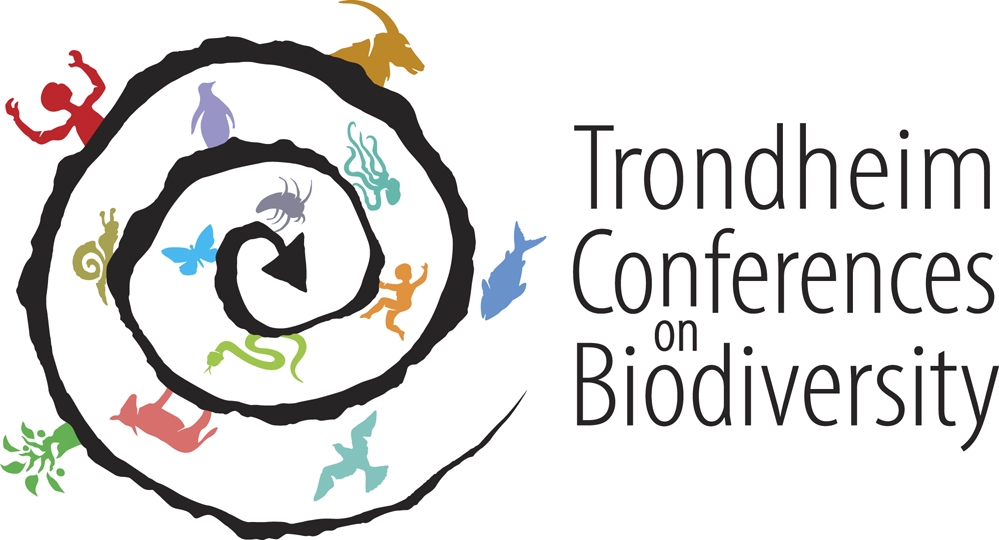Making biodiversity matter
In 2020 (in Kunming, China) the Convention on Biological Diversity will adopt a post-2020 global biodiversity framework as a stepping stone towards the 2050 Vision of "Living in harmony with nature". This vision was agreed under the CBD in 2010 (in Nagoya, Japan), and reads that the vision is a world of "Living in harmony with nature" where "By 2050, biodiversity is valued, conserved, restored and wisely used, maintaining ecosystem services, sustaining a healthy planet and delivering benefits essential for all people."
In November 2018 (in Sharm El-Sheikh in Egypt) the Convention adopted a comprehensive and participatory process for the preparation of this global framework. More information on this process is available in our background documents section, which includes links to the CBD Secretariat home page.
The ninth Trondheim Conference brought together decision-makers and experts from around the world to discuss the global biodiversity framework being developed as a follow up to the Strategic Plan for Biodiversity 2011-2020. The Conference will directly support the process established by the Convention, with opportunity for major players to discuss key issues informally outside of the negotiation process.
Those negotiating the post-2020 global biodiversity framework will need a clear understanding of the available evidence in order to help them develop a framework for the future that is both sufficiently ambitious for setting the world on a path to achieve the 2050 Vision for Biodiversity, and at the same time ensures that biodiversity and ecosystem services support delivery of needs and aspirations in other sectors.
The post-2020 global biodiversity framework is being developed with full understanding that many of the Aichi Biodiversity Targets in the Strategic Plan for Biodiversity 2011-2020 will not have been met. The current status of biodiversity and ecosystem services, and projections of future loss, are deeply concerning, but at the same time research is suggesting that change is possible.
Conference programme
The Conference addressed the challenges of achieving the 2050 Vision for Biodiversity and explored pathways for the transformational changes needed. Building upon multiple sources of knowledge, including the IPBES Global Assessment on Biodiversity and Ecosystem Services, the Conference facilitated a shared understanding of key knowledge areas, and helped to ensure that the process for developing the post-2020 global biodiversity framework is knowledge-based, just and inclusive.
The framework and main direction for the program was detailed and revised in light of advice from the CBD Secretariat and other partners. Program outlines were published on this home page on 28 January and on 14 March 2019. A concept note for the conference was developed prior to the 14th Conference of the Parties to the CBD in Sharm El-Sheikh in Egypt (COP14) in November 2018. The conference started on Tuesday 2 July at 0900 hrs (9 AM), and concluded on Friday 5 July 2019 at 1300 hrs (1 PM).
The conference programme itself is available in the conference programme section.

Social programme
The conference included a social programme for all participants, allowing for interaction and dialogue in a more informal setting. The social programme included a reception at the conference venue on July 2 (hosted by the Norwegian Ministry of Climate and Environment), an excursion with a reception on July 3 (hosted by the Norwegian Environment Agency) and a concert in the Nidaros Cathedral on July 4 (hosted by the City of Trondheim).
Interactivity
As stated in the invitation, the conference was interactive in form, with all participants expected to contribute actively to sessions. This was in particular be the case for sessions 3, 6 and 9 in the conference programme, but also in other sessions.
The Trondheim Conferences on Biodiversity
The Trondheim Conferences on Biodiversity have since 1993 created opportunities for increasing understanding amongst stakeholders about issues on the biodiversity agenda. They allow those involved in setting the agenda to learn and to share views and experiences with their peers.
Key objectives of the Trondheim Conferences on Biodiversity are to provide input to the decision-makers of the Convention on biological diversity (CBD); to provide an arena for open dialogue among stakeholders on the biodiversity agenda; to provide capacity enhancement for policy makers, managers, and scientists; to create a constructive, transparent and scientifically sound basis for addressing key issues under the CBD; and to provide an inclusive arena where representatives from all countries have the opportunity to meet and present their perspectives on equal terms.
The "founding father" of the Trondheim Conferences was Peter J. Schei, who from 1989 to 1995 was Director General for the Norwegian Directorate for Nature Management (since 2013 part of the Norwegian Environment Agency). He was Chair of the Subsidiary Body for Scientific, Technical and Technological Advice (SBSTTA) under CBD in 1996-1997. He chaired the five first Trondheim conferences and co-chaired the sixth conference. He attended the ninth conference, representing the Fridtjof Nansen Institute, where he was Director from 2004 to 2012.

